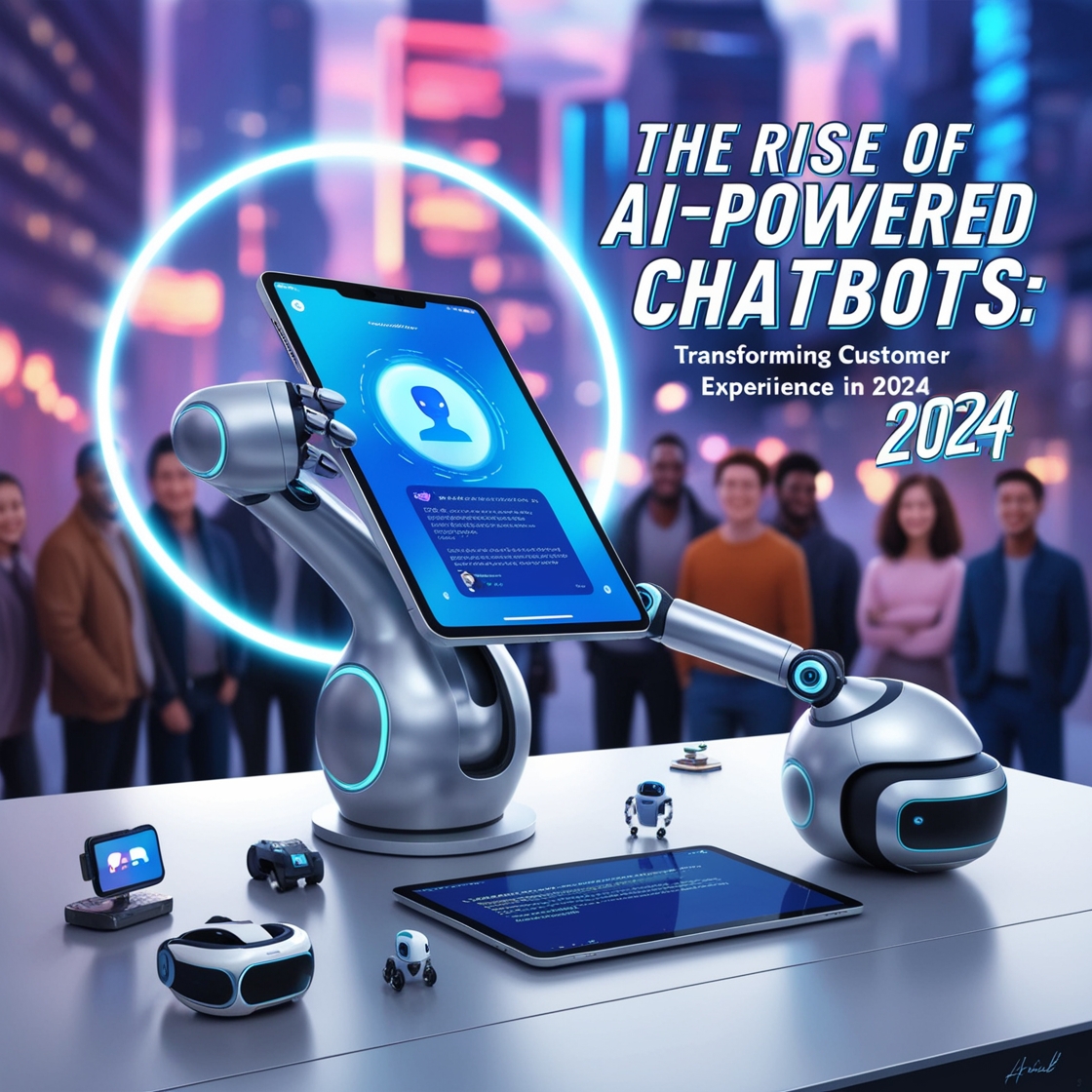In the fast-paced digital world of 2024, AI-powered chatbots are taking center stage in reshaping how businesses engage with customers. These intelligent tools aren’t just a tech trend—they’re revolutionizing customer experience, making interactions faster, more personal, and incredibly efficient. Let’s dive into how they work and why they matter.
What Are AI-Powered Chatbots?
AI-powered chatbots are software programs designed to simulate human conversations. Unlike traditional bots that relied on pre-programmed responses, these advanced chatbots use artificial intelligence (AI) technologies like machine learning (ML) and natural language processing (NLP). They learn from data, adapt to user behavior, and improve their responses over time.
Think of them as virtual assistants, ready to provide answers, solve problems, and even make recommendations, all in real-time.
The Evolution of Customer Expectations
Customers today expect more than ever. In an era where everything is a click away, they demand instant responses, personalized interactions, and seamless experiences. This shift has put businesses under pressure to innovate—and AI chatbots are stepping up to the challenge.
How AI-Powered Chatbots Work
At their core, AI chatbots rely on:
- Machine Learning: Learning patterns and improving over time.
- NLP: Understanding and responding to natural human language.
- Real-Time Data Analysis: Offering context-aware solutions.
For example, a chatbot assisting a traveler might suggest nearby hotels based on location and previous preferences, creating a highly tailored experience.
Benefits of AI-Powered Chatbots in Customer Experience
Instant Responses and Availability
Gone are the days of waiting in line for customer service. AI chatbots are available 24/7, ensuring immediate assistance anytime, anywhere. This level of availability enhances customer satisfaction and loyalty.
Personalization and Human-Like Interaction
Chatbots now mimic conversational tones, understanding slang, emojis, and context. They analyze user data to craft responses that feel human and personalized.
Cost-Efficiency for Businesses
By handling thousands of inquiries simultaneously, chatbots cut down operational costs without compromising quality, allowing businesses to allocate resources more strategically.
Industries Revolutionized by AI Chatbots
E-commerce
AI chatbots in e-commerce help customers find products faster, offer tailored recommendations, and streamline processes like returns, ensuring a smoother shopping experience.
Healthcare
From scheduling appointments to answering health-related queries, chatbots are improving patient care accessibility, all while reducing administrative burdens.
Banking and Finance
In this sector, chatbots assist customers with transactions, detect fraudulent activities, and provide personalized financial advice, making banking more accessible and secure.
Challenges and Limitations
While AI chatbots are powerful, they aren’t perfect. Misunderstandings due to language nuances or privacy concerns about data usage can hinder their effectiveness. Moreover, not all customers appreciate automated responses, highlighting the need for a balance between AI and human touch.
Future Trends in AI Chatbots
The future of AI chatbots looks exciting with trends like:
- Multilingual Support: Breaking down language barriers.
- Emotional Intelligence: Detecting user emotions for better interactions.
- IoT Integration: Managing smart home devices through conversational interfaces.
Real-World Examples of AI Chatbots
In 2024, many companies have implemented AI chatbots with great success. For instance, an online retailer used chatbots to reduce cart abandonment rates by 30%, while a healthcare provider streamlined appointment bookings, saving patients hours.
Implementing Chatbots for Businesses
If you’re considering adopting AI chatbots, start by defining your business needs. Choose a platform that aligns with your goals, train the bot with relevant data, and continuously monitor its performance to ensure optimal results.
Conclusion
AI-powered chatbots are not just tools—they’re game-changers in how businesses connect with customers. By offering speed, personalization, and efficiency, they’re setting new standards for customer experience. As technology advances, their potential is boundless.
FAQs
- What are the key differences between traditional and AI-powered chatbots?
AI-powered chatbots use advanced technologies like ML and NLP, enabling them to learn and adapt, while traditional bots rely on fixed scripts. - How do chatbots ensure data privacy?
By following stringent encryption standards and data protection laws, chatbots safeguard user information. - Can small businesses benefit from AI chatbots?
Absolutely! Chatbots help small businesses handle customer inquiries efficiently, improving service quality without hefty investments. - What happens when a chatbot fails to understand a query?
Most systems escalate complex issues to human agents, ensuring the customer receives accurate assistance. - Are AI chatbots replacing human customer service agents?
Not entirely. They complement human teams by handling repetitive tasks, allowing agents to focus on more complex issues.
